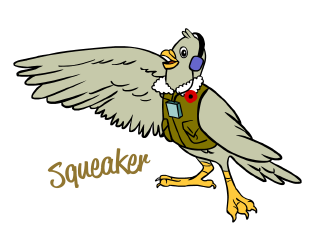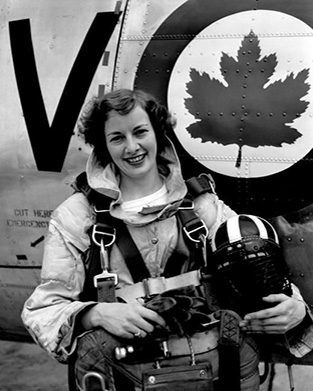Courage in the Air
A Royal Canadian Air Force parachute rescue nurse in 1955.
(Photo: Department of National Defence PL-130186)
Pigeons were used during the First and Second World Wars to deliver messages when radio or telephone communication was not possible. With our great sense of direction, just tie a note to our legs and we become ‘air mail’!
Being a bird, I like things that can fly. Aircraft have played a big role in our military efforts over the years. The first warplanes were very simple by today’s standards but soon fighter pilots swooped across the skies, trying to shoot down other planes. Aircraft dropped bombs on enemy targets or observed soldiers below to find out what they were doing. Transport planes were developed that could quickly deliver soldiers and supplies long distances. Jet-powered warplanes appeared at the end of the Second World War, with helicopters first seeing action during the Korean War.
There are other ways for people to fly in war – paratroopers are special soldiers who parachute from the sky. Military nurses also sometimes had to be able to parachute out of aircraft, in case people in remote locations needed emergency medical care.
The courage of Canadians in the air continues today. The Royal Canadian Air Force helps protect our country and aid others. The evolution of new kinds of aircraft has not stopped – special remote control drones are now often used to see a battlefield from above without putting a pilot in danger.
I am going to do my project about how aircraft have been used in times of war, for sure!
Did you know?
Canadian Armed Forces aircraft often rescue people on ships in trouble or planes that have crashed in the wilderness. Imagine hanging from a cable over a stormy ocean, being lowered from a helicopter to help sailors on a sinking boat. Now that is brave flying!

- Date modified:
